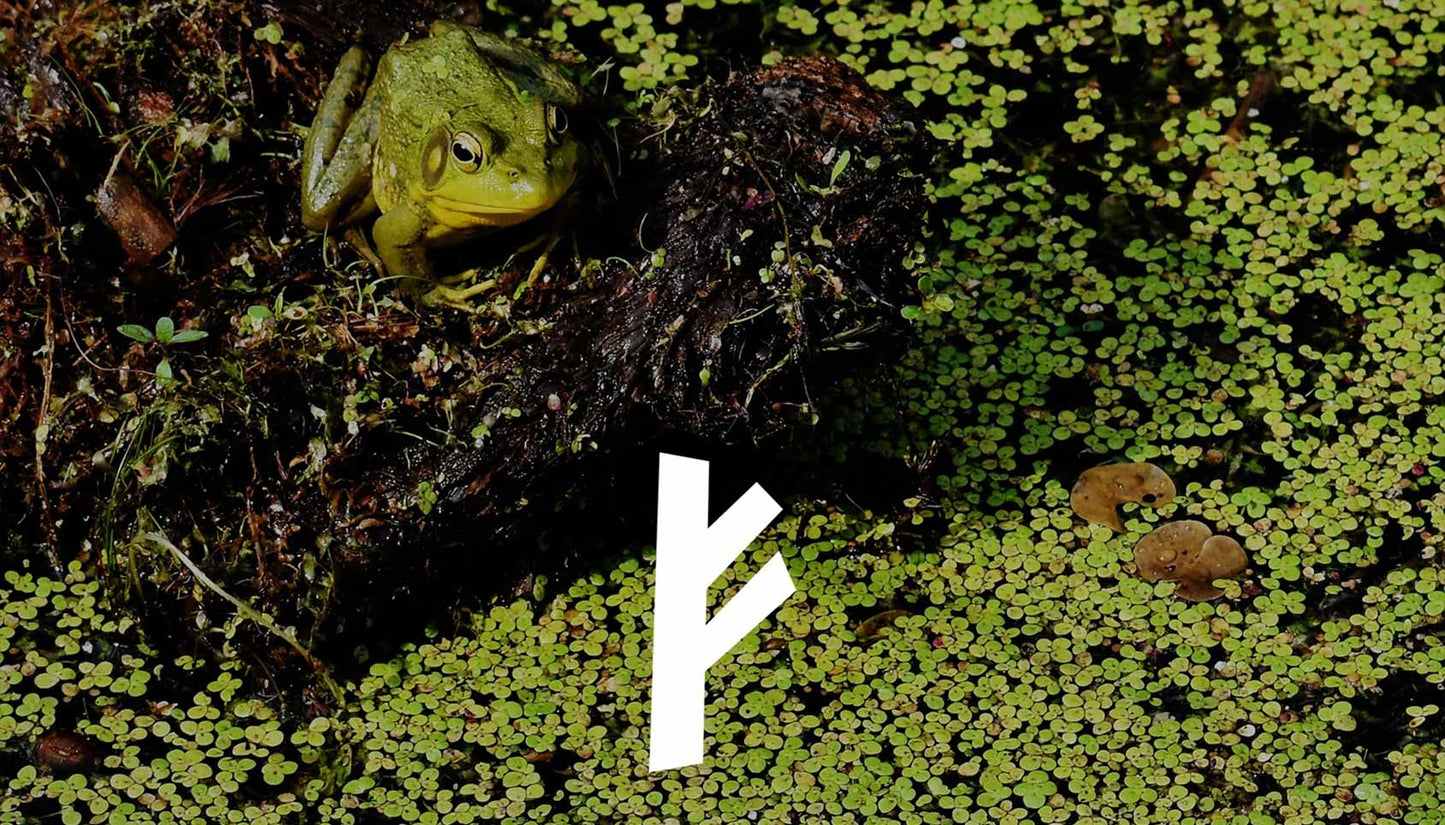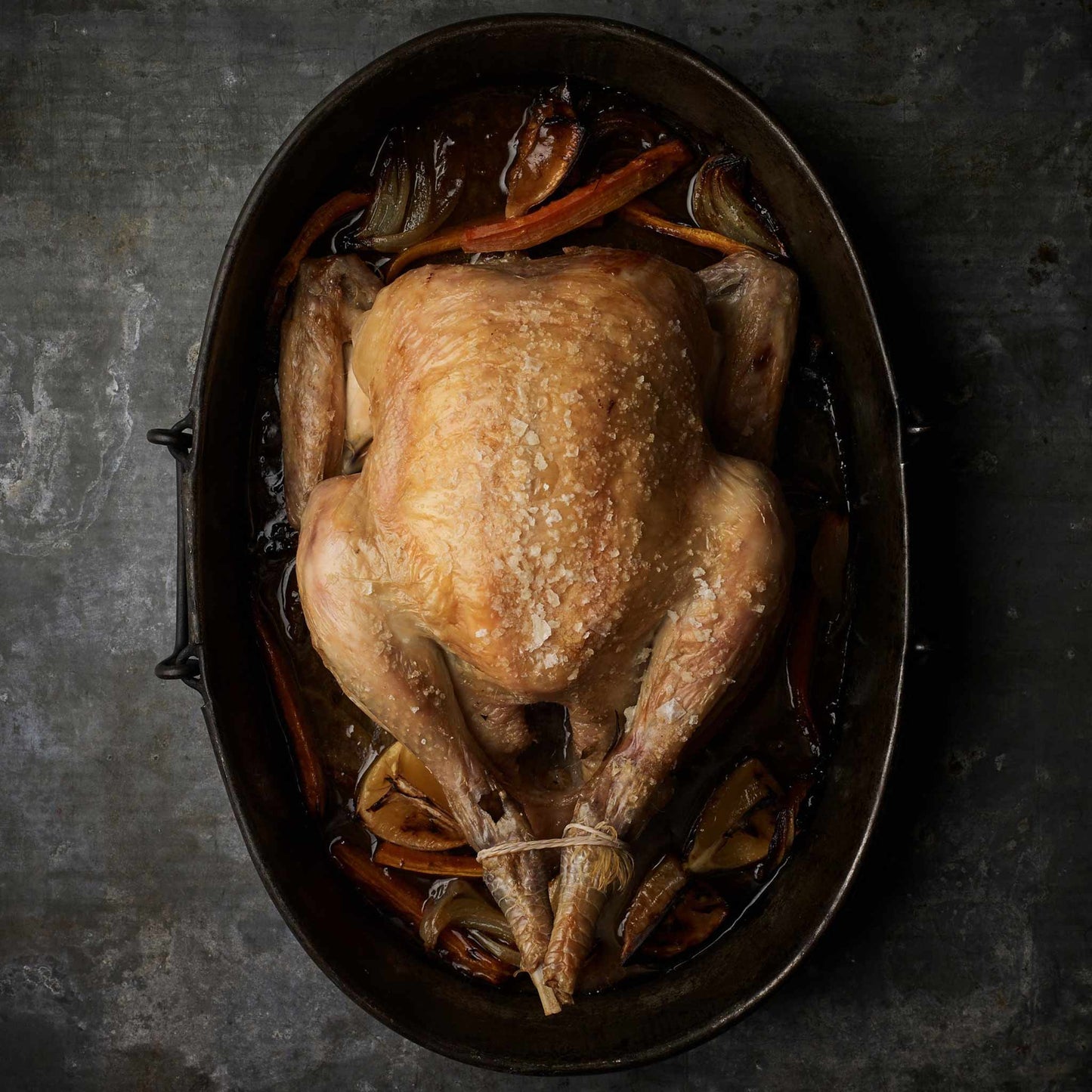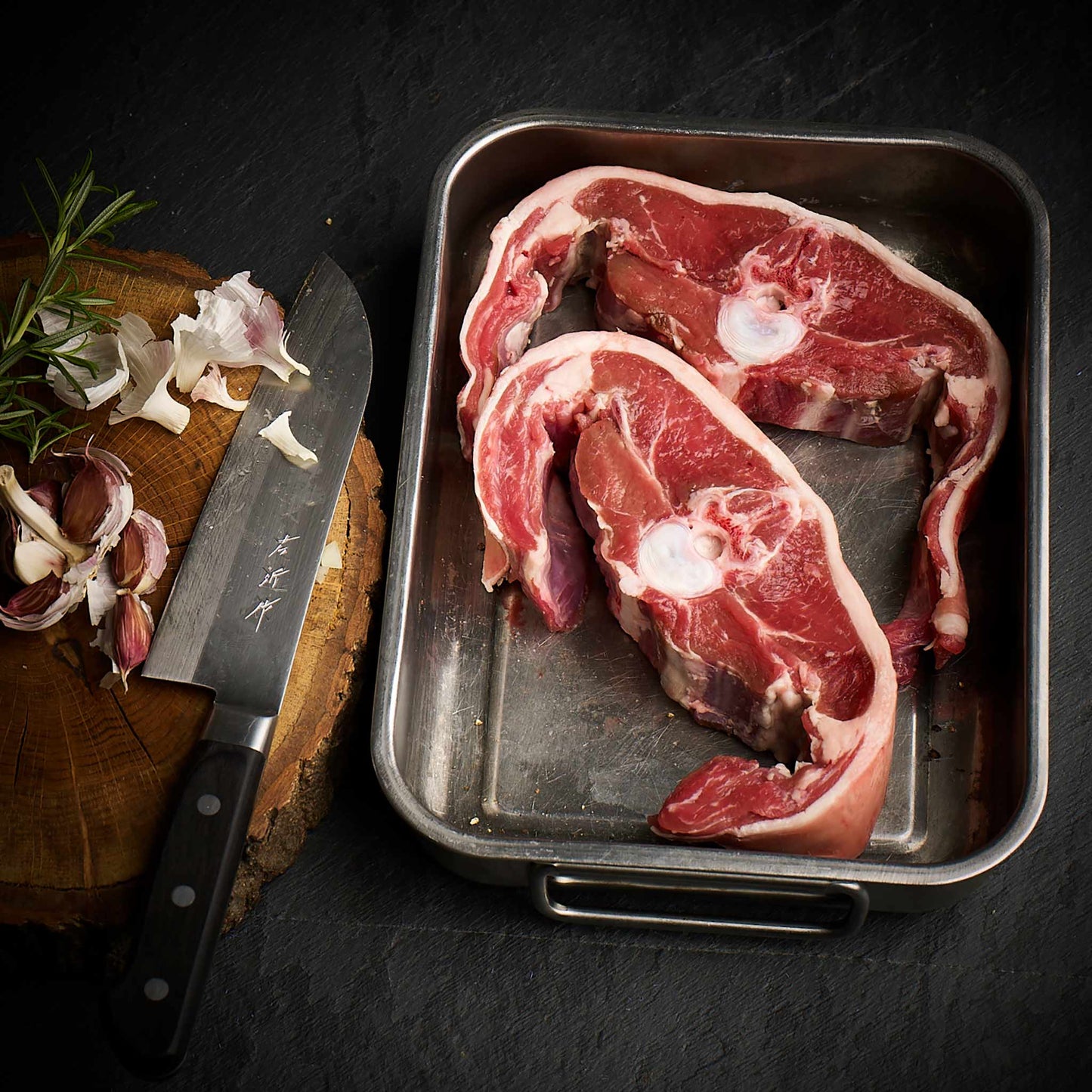We source our chicken from one farm in Leicestershire. The farm is Pasture for Life certified and rears truly free range, outdoor birds.

Sometimes all we need is a shift of perspective.
One of the many problems of intensive farming is manure or dung management.
In nature and in more natural farming systems animals are more spread out than intensive farming and they move across the land depositing their nutrient rich manure more evenly, in industrial farming this waste product concentrates and is stored in slurry pits and containers.
What to do with doodoo?
This stored animal waste can be dealt with in many ways, one way is to use tractors to muck spread, this uses fossil fuels as well as man power and is much less efficient than allowing the animals to distribute it naturally, it also causes that 'countryside smell'.
When muck is spread, if the soil is hard and compacted it can take a while for the land to absorb these nutrients and this is where problems can occur, a heavy rain at the wrong time or simply poor absorption into the soil can cause the manure to runoff into waterways which can cause huge problems.
When a body of water suddenly receives a disproportionately huge mass of nutrients the ecosystem is thrown out of balance and one effect can be a huge increase in plant growth, one of which can be duckweed.
What is duckweed?
Duckweed is a small aquatic floating perennial plant usually consisting of 3 leaves that are no more than 5mm in diameter, its roots trail underneath in the water and when many single plants grow together the roots can form a carpeted mass. Duckweed can replicate by dividing itself once a day meaning the growth is exponential, just a few plants can entirely cover a body of water in a very short time.
In nature duckweed will be kept in balance by the amount of nutrients available slowing growth and by duckweed acting as a food source for aquatic birds but when the system is thrown out of balance by a rapid introduction of nutrients problems can occur.
A large mass of duckweed will choke the water by removing much of the oxygen as well as blocking sunlight from penetrating past the surface, this reduction in sunlight and oxygen can lead to the death of below water plants and fish.
Can we use this to our advantage?
However, if carefully managed, duckweed can be used to clean up a water way following contamination from either chemical or organic fertiliser, it grows very fast and removes the excess nutrients equally fast as long as it is harvested. When managed it can be taken out of the system before it reduces the oxygen and sunlight penetration to levels that adversely affect the system, clearly it's better to keep our waterways free from contamination but duckweed offers us a way not only of managing the problem but also of recovering the nutrients.
Duckweed is incredibly nutritious!
Species of the duckweed genera, Spirodela, Landoltia, Lemna, Wolffiella and Wolffia were analysed for protein, fat, and starch contents as well as their amino acid and fatty acid distribution. Protein content spanned from 20% to 35%, fat from 4% to 7%, and starch from 4% to 10% per dry weight. Interestingly, the amino acid distributions are close to the WHO recommendations, having e.g. 4.8% Lys, 2.7% Met + Cys, and 7.7% Phe + Tyr. The content of polyunsaturated fatty acids was between 48 and 71% and the high content of n3 fatty acids resulted in a favourable n6/n3 ratio of 0.5 or less [1]
Of that protein content duckweed contains high levels of essential amino acids:
The duckweed was a rich source of essential (39.20%), non-essential (53.64%), and non-proteinogenic (7.13%) amino acids. Among essential amino acids, leucine, isoleucine, and valine constituted 48.67%. Glutamic acid was 25.87% of total non-essential amino acids. Citrulline, hydroxiproline, taurine, etc. [2]
Why this could be of interest to farmers is that this amino acid profile is very similar to that of soy meal which many farmers are reliant on to stimulate and facilitate growth in juvenile pork and poultry but which comes with very well publicised drawbacks because of where it originates often used to be rainforest.
What about soy-free chicken?
We've worked with our poultry and pork suppliers to remove soy from the food chain as it's mostly of brazilian origin, is linked to deforestation, is 98% GMO to be glyphosate (Roundup) resistant and has to be transported across the ocean, this makes it about as unethical as a crop can get and the reason for all of this is that it's simply very useful.
Certain essential amino acids stimulate growth in animals and they are very hard to find in plants in any significant quantities but soy contains them, fortunately, as noted above, so does duckweed.
Duckweed is being investigated for use as fish, pork and poultry feed with promising results. In aquaculture of farmed fish duckweed could replace the need for fish meal which is a by-product from the incredibly destructive dragnet trawling that descimatres our seabeds sweeping up everything indiscriminately.
Nature is cyclical, nutrients are noty lost, they are cycled, here we have a perfect example of how a problem can also be a solution and one of our farmers, Mark Chapple, who pioneered our soy free chickens, has taken it upon himself to grow and harvest this crop as a food source for his birds not only does this close the nutrient loop on the farm but he's producing a feedstuff equivalent to soy without the associated destruction and food miles, truly ethical.
See this short film where Mark talks about his experiments growing and feeding his chickens with this incredibly useful plant.



